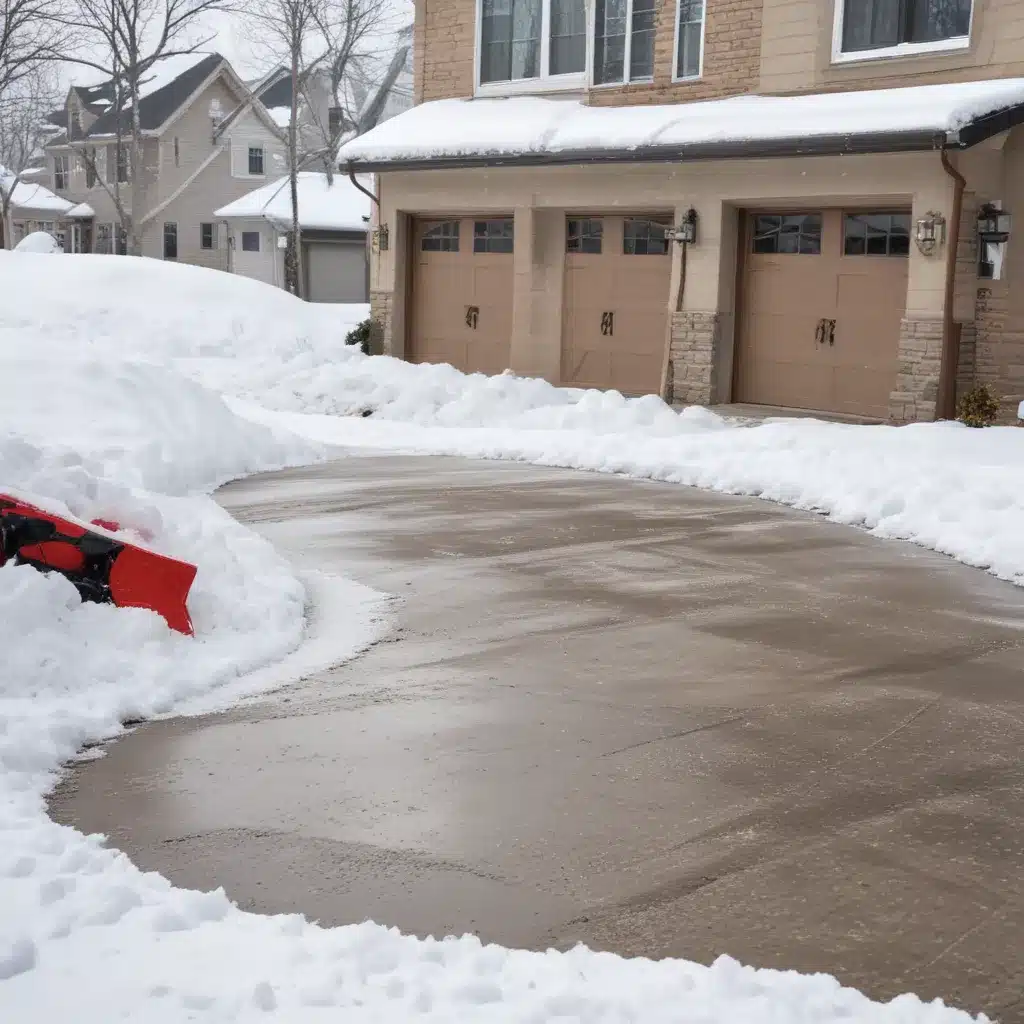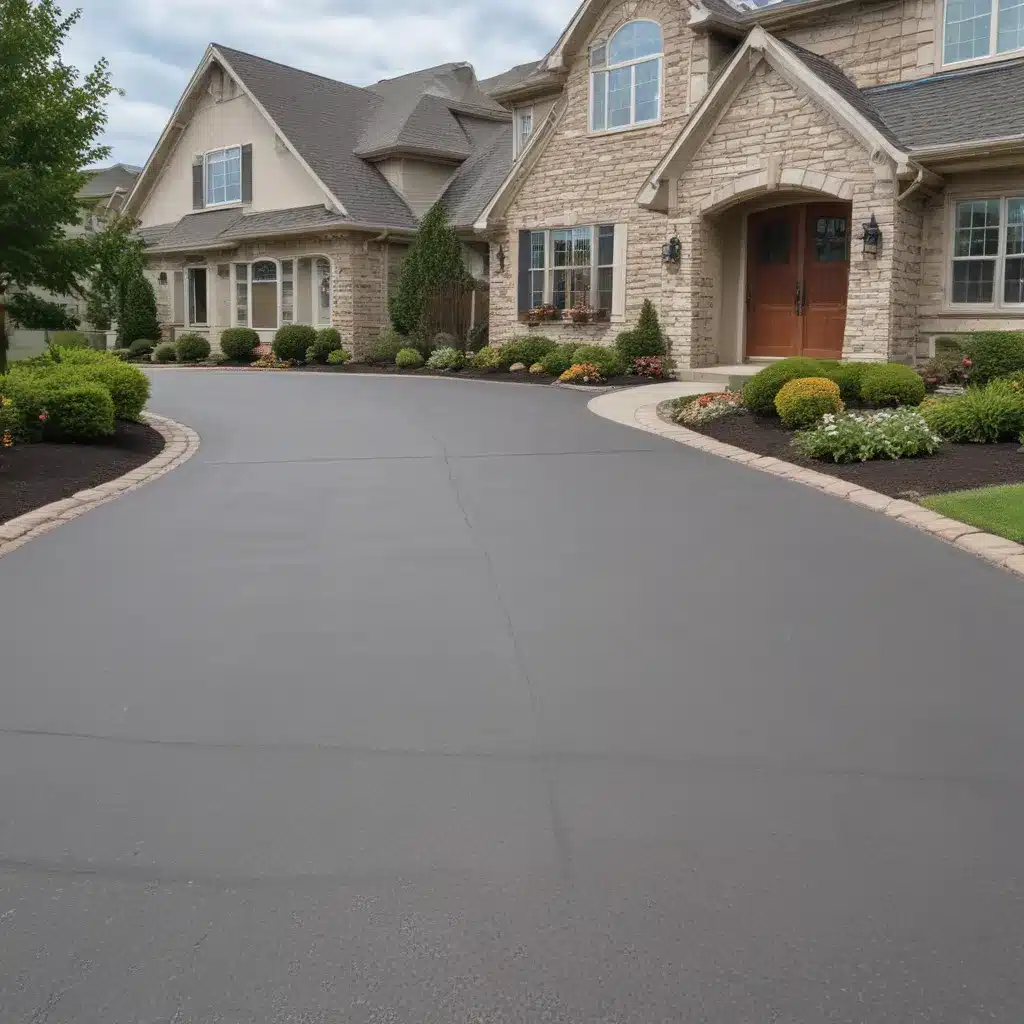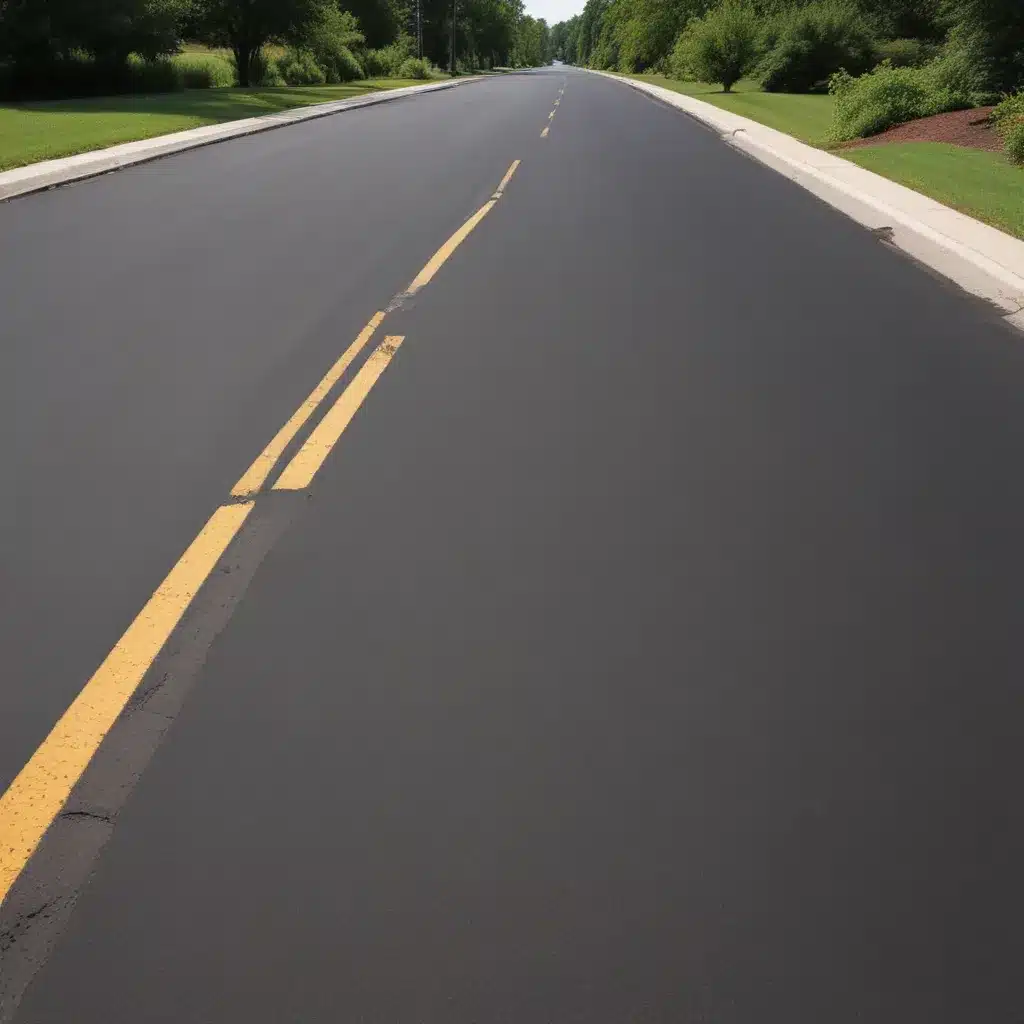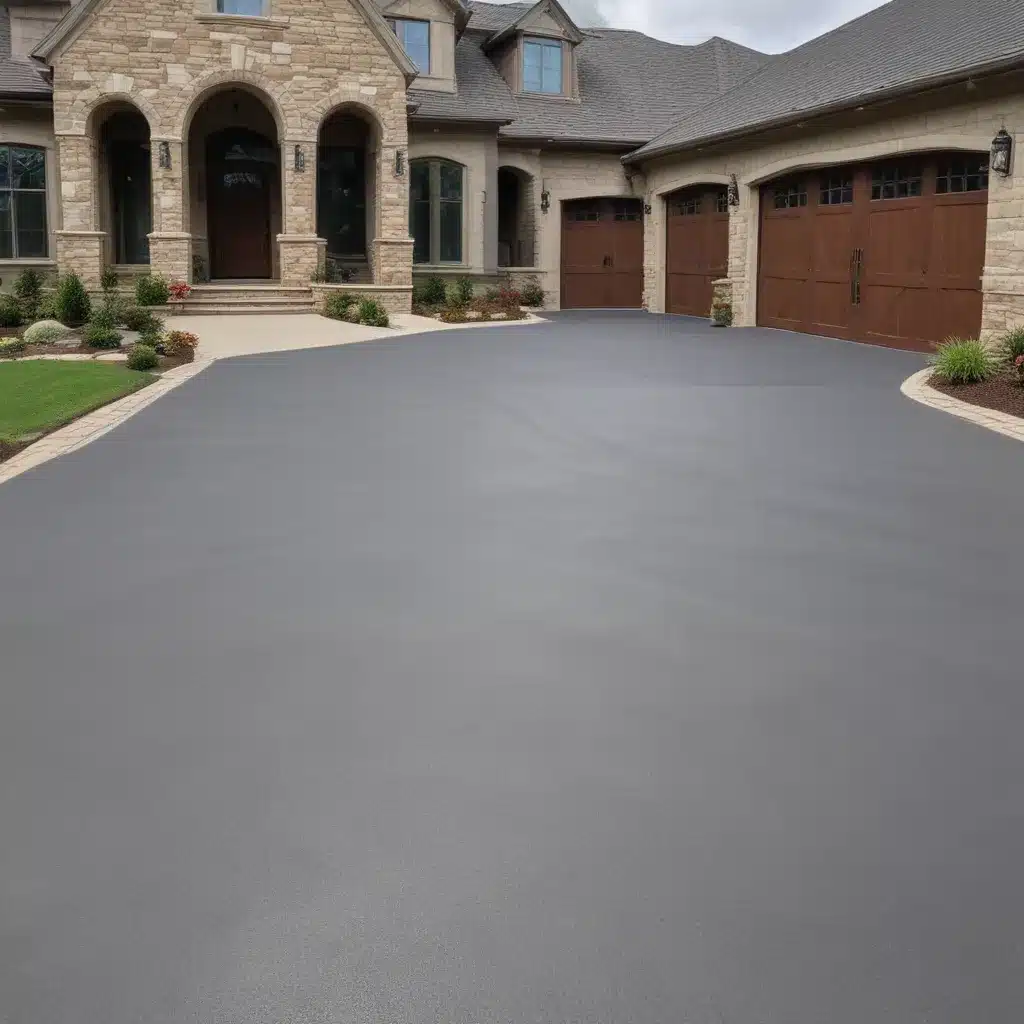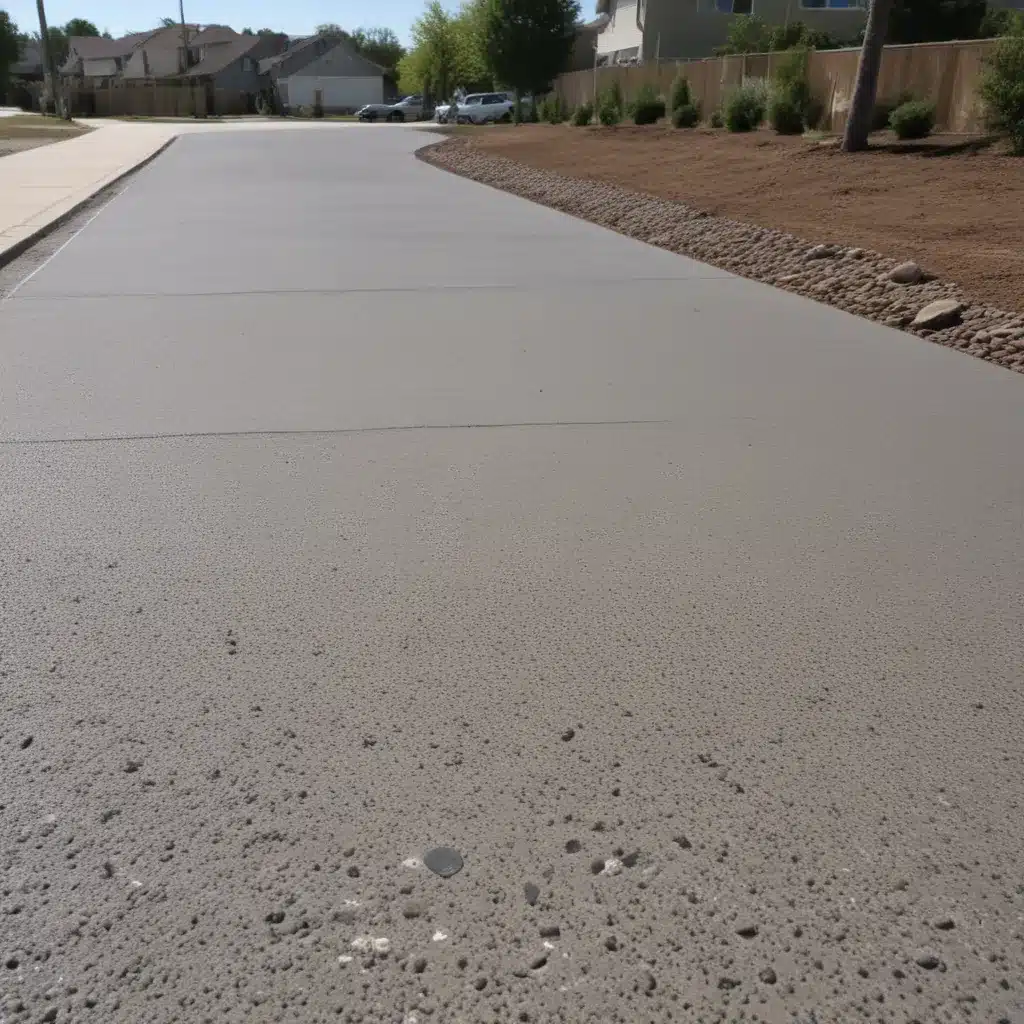Battling the Elements: A Snowy Saga on Concrete Driveways
I’ve always been fascinated by the interplay between nature and human ingenuity. And nowhere is this more apparent than when the winter winds howl, and the snow begins to pile up on our beloved concrete driveways. As the owner of NW Driveways, I’ve seen it all – from the delicate ballet of snowflakes dancing across the pavement to the arduous task of clearing it all away.
But fear not, my friends! I’m here to share my hard-earned wisdom and a few tricks of the trade that will make shoveling snow on concrete driveways a breeze. So, grab a hot cup of cocoa, cozy up, and let’s dive into the snowy adventure that awaits.
Choosing the Right Shovel: The Key to Efficient Snow Removal
As the old adage goes, “a workman is only as good as his tools.” And when it comes to shoveling snow, the choice of shovel can make all the difference. You see, the shape, size, and material of your shovel can greatly impact the ease and effectiveness of your snow removal efforts.
Let’s start with the shovel’s shape. A wide, rounded shovel is ideal for scooping up large, fluffy piles of snow, while a more narrow, pointed shovel excels at cutting through dense, icy deposits. Personally, I prefer a hybrid design that combines the best of both worlds – a shovel that’s wide enough to handle the bulk of the snow, yet sharp enough to slice through those stubborn frozen patches.
Next, consider the size of the shovel. A larger shovel may allow you to move more snow with each scoop, but it can also be heavy and cumbersome, especially for those with smaller frames. On the other hand, a smaller shovel may require more trips back and forth, but it can be easier to maneuver and control. The key is to find a balance that suits your strength and the size of your driveway.
Finally, the material of the shovel is crucial. Aluminum shovels are lightweight and durable, but they can quickly become slippery when the snow starts to melt. Steel shovels are more robust and provide a better grip, but they’re also heavier. My personal recommendation? A shovel with a sturdy, ergonomic handle and a reinforced, non-stick blade – the perfect combination of strength and efficiency.
Timing is Everything: When to Shovel for Maximum Effectiveness
Ah, the eternal question: when is the best time to shovel snow on a concrete driveway? Well, my friends, the answer is not as straightforward as you might think. You see, the timing of your snow removal efforts can have a significant impact on the overall process.
Now, you might be tempted to wait until the snow has fully accumulated before breaking out the shovel. After all, why do the job multiple times when you can tackle it all at once, right? Wrong! Letting the snow pile up can actually make the task much more arduous and time-consuming.
The secret is to shovel frequently, even if it means going out a few times a day. By addressing the snow as it falls, you’ll be able to tackle smaller, more manageable piles, rather than having to wrestle with a towering snowdrift. Trust me, your back will thank you for it.
But that’s not all! Timing is also crucial when it comes to the temperature. You see, shoveling snow when it’s just above freezing can be a real challenge, as the snow tends to be dense and heavy, clinging to the concrete like a stubborn toddler. On the other hand, shoveling when the temperature is well below freezing can be a test of your fortitude, as the snow becomes dry and powdery, practically leaping off the ground.
My advice? Keep an eye on the weather forecast and aim to shovel during those sweet spots when the temperature is hovering just below the freezing mark. This way, the snow will be loose and easy to move, without being a complete chore to lift.
Proper Technique: Maximizing Efficiency and Minimizing Strain
Now, let’s talk about the art of shoveling snow on concrete driveways. It’s not as simple as just grabbing a shovel and haphazardly flinging the snow aside. No, my friends, there’s a method to the madness, and mastering the proper technique can mean the difference between a smooth, efficient process and a back-breaking ordeal.
First and foremost, let’s address the all-important posture. Stand with your feet shoulder-width apart, knees slightly bent, and back straight. This stance not only helps to distribute the weight evenly but also reduces the strain on your lower back. And remember, lift with your legs, not your back – it’s a lesson I learned the hard way, let me tell you.
Next, consider the angle of your shovel. Rather than plowing straight into the snow, try to angle the blade slightly upwards, almost as if you’re slicing through the drifts. This not only makes the snow easier to lift but also helps to prevent it from sticking to the shovel and weighing you down.
And speaking of weight, be mindful of how much you’re trying to move at once. Resist the temptation to overload your shovel, as that can quickly lead to fatigue and muscle strain. Instead, focus on making multiple, smaller scoops, gradually clearing the snow in manageable chunks.
Finally, don’t forget to take breaks! Shoveling snow can be a physically demanding task, and it’s important to listen to your body. If you start to feel the burn, take a moment to catch your breath, stretch, and hydrate. Trust me, your future self will thank you for it.
Dealing with Ice: A Slippery Situation
Now, let’s talk about the dreaded nemesis of concrete driveway owners everywhere: ice. Whether it’s a thin, glassy layer that forms overnight or a stubborn sheet that refuses to budge, dealing with ice can be a real challenge.
But fear not, my friends! I’ve got a few tricks up my sleeve that can help you conquer the icy beast.
First and foremost, prevention is key. By addressing the snow as it falls, you can minimize the chances of it turning into a treacherous sheet of ice. And when the temperature dips, be proactive in applying a de-icing agent to your concrete driveway. This can help keep the surface from freezing over in the first place.
But what if you’re already facing an icy situation? Well, that’s where your trusty shovel and a little elbow grease come into play. Start by attacking the ice with a sharp, pointed shovel, aiming to break it up into smaller, more manageable pieces. And if that doesn’t do the trick, try sprinkling a generous layer of rock salt or sand over the icy surface. The abrasive nature of these materials can help provide traction and slowly melt the ice away.
And let’s not forget about the power of good old-fashioned muscle. If you’re faced with a particularly stubborn patch of ice, don’t be afraid to put your back into it and really go to town with the shovel. Just remember to keep that proper posture we discussed earlier, and take breaks as needed.
Remember, dealing with ice on concrete driveways is all about being proactive, persistent, and patient. With the right tools and techniques, you can conquer even the slipperiest of situations.
Disposing of Snow: Keeping Your Driveway Clear and Tidy
Ah, the final frontier of the snow-shoveling saga: disposing of the white stuff once you’ve conquered it. It may seem like a simple task, but trust me, there’s an art to it.
First and foremost, let’s talk about where to put all that snow. Resist the temptation to just pile it up in the nearest corner or on the lawn – that’s a recipe for disaster, my friends. Instead, focus on moving the snow to designated areas that won’t obstruct walkways, block access to your home, or create hazardous conditions.
Now, I know what you’re thinking – “But where the heck am I supposed to put it all?” Well, that’s where a little creativity and strategic planning come into play. Consider creating a snow mound in an out-of-the-way corner of your property, or even using it to build a festive snowman for the neighborhood to enjoy.
And let’s not forget about the importance of timing. The best time to dispose of snow is when it’s still fresh and powdery, rather than waiting until it’s turned into a dense, compacted mess. This not only makes the task easier but also helps to prevent the formation of those pesky icy patches we discussed earlier.
But what about the little details, you ask? Well, I’m glad you brought that up. When disposing of snow, it’s important to be mindful of where you’re placing it – you don’t want to accidentally block access to your home or create a slip hazard for yourself or others. And if you’re dealing with particularly dirty or gritty snow, consider finding a designated disposal area that can handle the mess without causing any environmental issues.
Remember, the key to effective snow disposal is all about planning, timing, and a touch of creativity. With a little bit of effort, you can keep your concrete driveway sparkling and clear, even in the midst of a winter wonderland.
Protecting Your Driveway: Maintaining Concrete in the Snow
Now, let’s talk about something that’s near and dear to my heart: protecting your concrete driveway from the ravages of winter. You see, while shoveling snow is a necessary evil, it’s also important to be mindful of the impact it can have on your beloved pavement.
First and foremost, let’s address the issue of salt and de-icing agents. These chemical concoctions can be incredibly effective at melting ice and keeping your driveway safe, but they can also wreak havoc on the concrete itself. Over time, the constant exposure to these corrosive substances can lead to cracking, spalling, and other unsightly blemishes.
So, what’s a snow-weary homeowner to do? Well, I’ll let you in on a little secret: the key is to strike a delicate balance. Instead of relying solely on salt and de-icers, consider incorporating more eco-friendly alternatives like sand, gravel, or even calcium chloride. These options are gentler on your concrete and can still provide the necessary traction and melting power.
And let’s not forget about the importance of proper shoveling technique. As we discussed earlier, the way you wield your shovel can make a big difference in the wear and tear on your driveway. By angling the blade correctly and avoiding excessive downward force, you can minimize the risk of chipping, cracking, or otherwise damaging the concrete surface.
But the protection doesn’t stop there, my friends. It’s also crucial to keep a close eye on the condition of your driveway throughout the winter season. If you notice any cracks, spalling, or other signs of damage, don’t hesitate to address them right away. A little bit of preventative maintenance can go a long way in preserving the long-term integrity of your concrete.
Remember, protecting your driveway is all about striking the right balance between effective snow removal and gentle, thoughtful care. With a little bit of diligence and a whole lot of know-how, you can keep your concrete looking its best, even in the face of Old Man Winter’s icy onslaught.
Conclusion: Embrace the Winter Wonderland, Conquer the Concrete
As I sit here, sipping my hot cocoa and gazing out at the glistening, snow-covered landscape, I can’t help but feel a sense of pride and accomplishment. You see, shoveling snow on concrete driveways may seem like a daunting task, but with the right mindset, the proper tools, and a touch of strategic know-how, it can actually be a truly rewarding experience.
Remember, my friends, the winter months are not just a time of toil and tribulation – they’re an opportunity to embrace the natural beauty that surrounds us and to showcase our ingenuity in the face of the elements. So, the next time the snow starts to fall, don’t dread the task at hand – instead, see it as a chance to channel your inner winter warrior and conquer that concrete driveway with style and grace.
And if you ever find yourself in need of a little extra help or guidance, don’t hesitate to reach out to the experts at NW Driveways. We’re always here to lend a hand and share our hard-earned wisdom, because at the end of the day, we’re all in this snowy saga together.
So, grab your shovel, don your warmest winter gear, and let’s get out there and tackle those driveways, one flake at a time. The snow may be falling, but our spirits will be soaring higher than the icicles on the rooftops. After all, there’s nothing quite like the thrill of conquering the elements and emerging victorious, ready to embrace the wonders of the season.

